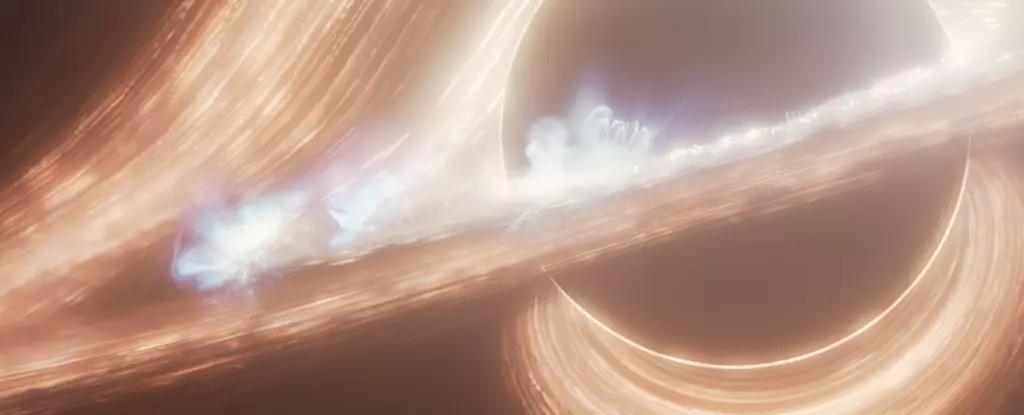In the enigmatic heart of our Milky Way galaxy lies Sagittarius A*, a supermassive black hole that, while not the most insatiable when compared to its distant counterparts, nevertheless harbors its own captivating secrets. Recent observations made by NASA’s James Webb Space Telescope (JWST) have illuminated the dynamic environment surrounding this cosmic giant, revealing a mesmerizing array of luminous flares and bursts that contradict earlier assumptions about its activity levels. This article delves deep into these findings, offering a fresh perspective on the intriguing flares emitted by Sagittarius A*.
The research team led by Farhad Yusef-Zadeh conducted an extensive study of Sagittarius A* utilizing the JWST’s Near-Infrared Camera (NIRCam) over a period of 48 hours. They meticulously divided their observations into segments spanning eight to ten hours, an innovative approach designed to maximize data collection. What unfolded was a captivating display of fluctuating brightness, marked by regular bursts of illumination that the researchers hadn’t anticipated. Sagittarius A* was observed emitting approximately five or six prominent flares daily, interspersed with multiple minor bursts, painting a picture of a lively and unpredictable cosmic environment.
The unpredictability of flares emanating from Sagittarius A* poses a fascinating challenge for astrophysicists. Yusef-Zadeh describes a visual spectacle where brightness fluctuates incessantly; then suddenly, a significant flare erupts, followed closely by a return to calm. This chaotic nature defies straightforward patterns, prompting researchers to theorize that multiple processes consequently contribute to these manifestations. Smaller flares are attributed to turbulence within the accretion disk—a hot, dense collection of gas swirling around the black hole. This turbulence compresses the magnetized gas, akin to solar flares generated by our Sun.
The larger bursts, however, seem to stem from magnetic reconnection events. Such phenomena occur when disparate magnetic fields converge—potentially releasing an explosive cocktail of particles that travel at extraordinary speeds, nearing the velocity of light. The juxtaposition of these processes leads to remarkable implications for how we understand the energetic interactions around black holes.
Perhaps the most groundbreaking aspect of this study relates to the different behaviors of the flares across two near-infrared wavelengths. While observing almost simultaneous events, the research team noted that bursts monitored at shorter wavelengths exhibited variations in brightness slightly ahead of those at longer wavelengths. This unprecedented observation of time delays, ranging from a few seconds to 40 seconds, suggests a fundamental difference in the dynamics governing the emissions.
This pattern hints at the energy transformation processes occurring within the accretion disk, providing crucial insights into how particles behave in the intense gravitational and magnetic fields surrounding a black hole. It raises provocative questions about energy loss and particle acceleration, potentially revolutionizing our understanding of cosmic radiation.
Armed with these extraordinary insights, the research team aspires to secure additional time on the JWST. Longer observation spans would help mitigate background noise, allowing for a cleaner, more coherent understanding of the flaring events surrounding Sagittarius A*. According to Yusef-Zadeh, tackling the noise obstacle will be pivotal in revealing nuanced features obscured in past data. The prospect of such refined observations ignites excitement, promising to unravel further mysteries of our galaxy’s volatile center.
The findings surrounding Sagittarius A* challenge existing perceptions of black holes, inviting astrophysicists into a deeper inquiry about the underlying physical processes responsible for its vibrant activity. With the powerful capabilities of the James Webb Space Telescope, the cosmic narratives of Sagittarius A* continue to unfold, revealing an astonishing interplay of energy, light, and magnetic forces at the universe’s most extreme gravitational edges. As researchers embark on further explorations, the potential for groundbreaking revelations about the heart of our galaxy grows ever more exciting.

